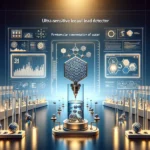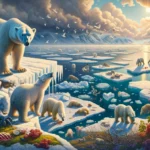In a universe teeming with wonders, astronomers have stumbled upon a revelation that reshapes our understanding of cosmic dust storms. Traditionally, the genesis of cosmic dust, those tiny particles that drift through space, contributing to the birth of stars and planets, was largely attributed to the cataclysmic demise of massive stars known as core-collapse supernovae. However, a recent discovery has illuminated a new architect of the cosmic dust landscape: Type Ia supernovae.
Emerging from the collaborative efforts of an international team of astronomers, this breakthrough finds its roots in the interaction of Type Ia supernovae with the surrounding gas. Unlike their core-collapse counterparts, Type Ia supernovae originates from the explosive end of white dwarf stars in binary systems. This revelation is particularly intriguing as it introduces a novel source of dust production in elliptical galaxies, realms previously thought barren of such processes due to the absence of core-collapse supernovae.
The crux of this discovery was the meticulous observation of SN 2018evt, a Type Ia supernova, over an extensive period exceeding three years. Leveraging an array of observational facilities, including the vantage points of NASA’s Spitzer Space Telescope and the global network of telescopes under Las Cumbres Observatory, the research team witnessed a dramatic transformation. As the supernova collided with pre-existing material ejected by its progenitor stars, a shock wave ensued, setting the stage for dust formation. The once-bright optical light of the supernova dimmed, giving way to a burgeoning glow in the infrared spectrum—a clear indication of dust genesis amidst the cooling gas.
Professor Lingzhi Wang of the South America Center for Astronomy at the Chinese Academy of Sciences, leading the study, expressed the monumental nature of this finding. For the first time, a rapid and significant dust formation event was observed in the aftermath of a thermonuclear supernova engaging with circumstellar material. This process, captured in the dimming and subsequent infrared glow, signifies the birth of cosmic dust in an environment previously overlooked.
The implications of this study are profound, suggesting that the dust created by this singular event could amount to more than 1% of the Sun’s mass. As these supernovae cool, the dust yield could increase tenfold, positing Type Ia supernovae as potential dominant dust contributors in elliptical galaxies. This insight not only challenges our previous conceptions but also opens new avenues for exploration with the James Webb Space Telescope (JWST), whose infrared capabilities are ideal for unveiling the secrets of cosmic dust.
As Professor Andy Howell from Las Cumbres Observatory and the University of California Santa Barbara puts it, this discovery is a testament to the cyclical narrative of creation and destruction in the cosmos. From the remnants of stellar death, new planets and possibly life forms may one day emerge. This study not only enriches our knowledge of the cosmic cycle of matter but also underscores the enduring mystery and majesty of the universe, inviting us to ponder our place within this grand tapestry.
















